- Books Name
- Social Science Book
- Publication
- Cognizance Publication
- Course
- CBSE Class 7
- Subject
- Social Science
Cultures
Classical dances
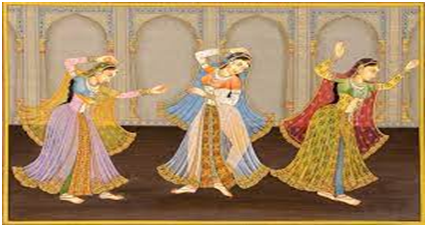
Beyond regional frontiersthe Story of Kathak
The term Kathak is derived from katha, a word used in Sanskrit and other languages for story.The Kathaks were originally a caste of storytellers in temples of North India, who embellished their performances with gestures and songs.It began evolving into a distinct mode of dance in the fifteenth and siteenth century, with the spread of the bhakti movement.The legends of Radha Krishna were enacted in folk plays called Rasa lila, which combined folk dance with the basic gestures of the Kathak storytellers.
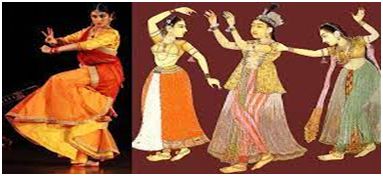
Mughal emperors and their nobles kathak was performed in the court. It developed intwo traditions or gharanas: one in the courts of Rajasthan (Jaipur) and the other in Lucknow.Under the patronage of Wajid Ali Shah, the last Nawab of Awadh, it grew into a major art form.By the third quarter of the nineteenth century, it was firmly established as a dance form in the adjoining areas of present dayPunjab, Haryana, Jammu and Kashmir, Bihar and Madhya Pradesh.Kathak was viewed with disfavour by most British administrators in the nineteenth and twentieth centuries.However it survived and continued to be performed by courtesans, and was recognised as one of ‘six classical’ forms of dance in the country after independence.
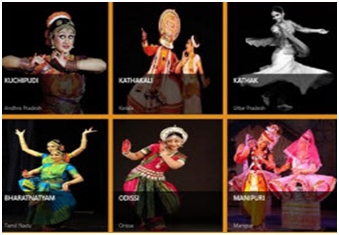
It is worth remembering that many dance forms that are classified as folk also share several of the characteristics considered typical of classical forms. So while the use of term classical may suggest that these forms are superior, this need not always be literally true.Other forms that are recognised as classical at present are Bharatanatyam (Tamil Nadu); Kathakali(Kerala); Odissi(Odisha); Kuchipudi(Andhra Pradesh); Manipuri(Manipur)
Paintings
Printing for Patrons, the Tradition of Miniatures
Miniature are small size paintings generally done in watercolour on cloth or on paper. The earliest miniatures were on palm leaves or wood.Some of the most beautiful of these are found in Western India, were used to illustrate Jainas texts.The Mughal emperor Akbar, Jahangir, and Shahjahan patronised highly skilled painters who primarily illustrated manuscripts containing historical accounts and poetry.
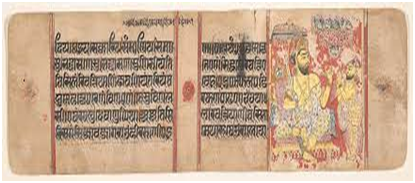
These were painted in brilliant colours and portrayed court scenes, scene of battle or hunting and other aspects of social life.These were often exchanged as gifts and were viewed only by an exclusive few, the emperor and his close associates.With the decline of the Mughal Empire, many painters moved out to the courts of the emerging regional states.As a result, Mughal artistic tastes influence the regional court of the Deccan and Rajput courts of Rajasthan. Portraits of rulers and court scenes came to be painted following the Mughal example. Besides, themes from mythology and poetry were depicted at centres such as Mewar, Jodhpur, Bundi, kota and Kishangarh.By the late seventeenth century, the Himalayan region has developed the bold and intense style of miniature painting calledBusohli.The most popular text to be painted here was Bhanudatta’sRasamanjari. By the mid eighteenth century, the Kangra artists developda style which breathed a new spirit into miniature painting. The source of inspiration was theVaishnavite traditionas. Soft colours including cool blues and greens, and a lyrical treatment of themes distinguish Kangra painting.
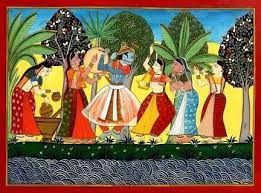
Tradition and Languages
Growth of regional language
Now a days, people in Bengal, Bengali.From the fourth to the third century BCE, commercial ties begin to develop between Bengal and Magadha, which led to the growing influence of Sanskrit.During the fourth century, the Gupta rulers, established political control over North Bengal and begin to settle Brahmanas in this area. Thus, the linguistic and cultural influence from mid-Ganga valley became stronger.
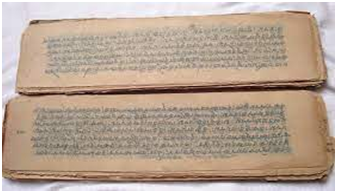
In the seventh century, the Chinese traveller Xuan Zang observed that languages related to Sanskrit were in use all over Bengal.In 1586, when Akbar conquered Bengal, It found the nucleus of Bengal Suba.During this period, Bengali developed as regional language.In fact, by the fifteenth century, the Bengali group of dialects came to be united by a common literary language based on the spoken language of the western part of region now known as West Bengal. As Bengali is derived from Sanskrit, it passed through several stages of evolution.Wide range of non Sanskrit words, derived from a variety of sources including tribal languages, Persian and European languages, have become part of modern Bengali.Early Bengali literature may be divided into two categories-one indebted to Sanskrit and the other independent of it.The first include translation of the Sanskrit epics, the Mangalkavyas and bhakti literature suchas the biographies of Chaitanyadeva, the leader of Vaishnavabhakti movement.The second include Nath literature such as the songs of maynamati and Gopichandra,stories concerning the worship of Dharma Thakur and fairy tales, folk tales and ballads.Texts belonging to the first category are easier as several manuscripts have been found indicating that they are composed between the late fifteenth and mid eighteeth centuries. Those belonging to the second category circulated orally and cannot be precisely dated.
Maynamati, Gopichandra and Dharma Thakur
The Naths were ascetics who engaged in variety of yogic practices. This particular often enacted described how Maynamati, a queen, encoraged her son Gopichandra to adopt the path of asceticism in the face of a variety of obstacles. Dharma Thakur is a popular regional deity, often worshipped in a form of stone or a piece of wood.
Pirs and Temples
In the sixteenth century, people began to migrate in large numbers from the less fertile western Bengal to the forested and marshy areas of South-eastern Bengal.As they moved eastward, they cleared forest and brought the land under rice cultivation.Local communities of fisher folks and shifting cultivators, often tribals merged with the new communities of peasants.The early settler sought some order and assurance in the unstable conditions of the new settlements. The community leaders called pirs, were the source of order and stability for the early settlers.They included Sufi saints, soldiers, colonisers, Hindu and Buddhist deities and spirits.The cult of pirs became very popular and their shrines can be found everywhere in Bengal.From the fifteenth century onwards, temple construction started on a large scale.Modest bricks and terracotta temples in Bengal were built with the support of several ‘low’ social groups, such as the Kolu(oil pressers) and the Kansari(bell metal workers).As their social and economic position improved, they proclaimed their status through the construction of temples.When local dietes, once worshipped in thatched huts in villages, gained the recognition of the Brahmanas, their images began to be housed in temples.
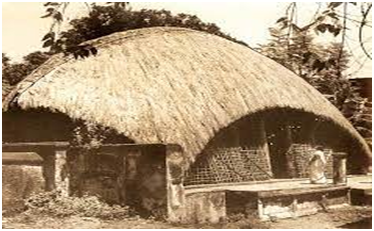
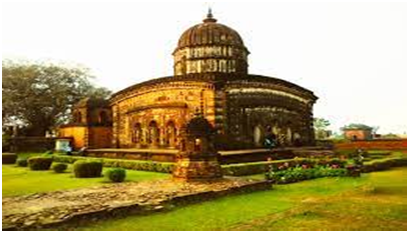
The temples began to copy the double-roofed(dochala) or four roofed (chauchala) structure of the thatched huts.This led to the evolution of typical Bengali style in the temple architecture.The interiors were relatively plain, but the outer walls of many temples were decorated with paintings, ornamental tiles or terracotta tablets.In some temple, particularly in Vishnupur in Bankura district of West Bengal, such decorations reached a high degree of excellence.
Fish as food
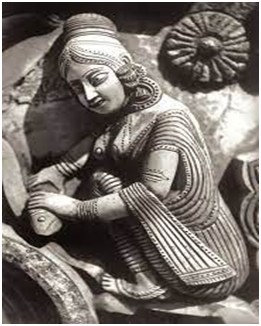
Bengalis a riverine plane which produces plenty of rice and fish.These two items figure predominantly in the menu of even poor Bengalis. Fishing has always been an important occupation, and Bengali literature contains several references to fish.Terracotta plaques on the walls of temples and Viharas depict scenes of fish being dressed and taken to the market in baskets.Brahmanas were not allowed to eat non vegetarian food, but the popularity of fish in the local diet made the Brahminical authorities relax this prohibition for the Bengal Brahmanas.The Brihaddharma Purana, a thirteenth century Sanskrit text from Bengal, permitted the local Brahmanas to eat certain varieties of fish.

 Cognizance Publication
Cognizance Publication
